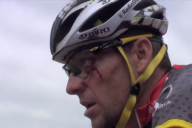The World Tour is broken, the rankings are broken and nonsense, women’s cycling is struggling, race organisers are struggling, but fear not, I have a plan, a cunning plan…
Ok, so some of these ideas are re-working what is already in place, some are ideas that others have already had, and some are just crazy ideas all of my own. Some will work, some won’t, and some, don’t even have a chance of working. But, I’m head of the UCI for a day, so what am I going to do?
Aims
- Address the issue of “secret” rankings and renewal of World Tour licences
- Make the issue of licences at season’s-end clear, public, and more importantly, quick
- Address the issue of top-level teams being forced to ride all races
- Develop the women’s sport
- Develop the Pro Continental and Continental circuit
- Increase investment in women’s and development squads
- Remove conflict of interest between UCI and race organisation and prevent new races being automatically afforded top-level status.
- Reward races that offer both women’s and u23 racing.
- Address the issue of riders taking points with them, or not racing late season if they are leaving.
- Introduce clear rules regarding the transfer window and contracts
- Results management following doping bans
Teams
- For me, the issue surrounding World Tour licences, number of top-level teams and how they are ranked, and how licences are handed out needs simplifying and revising. And situations where we have teams not knowing in the middle of December what league they will be in for the next year are simply unacceptable. The top division also needs reducing; when you have 18 teams, lower level teams are battling for wild cards, and World Tour teams are forced into attending every race on the World Tour Calendar wether they want to or not.
- The World Tour should be renamed Division One. Pro Continental then becomes Division 2, and Continental, Division 3. The top level needs to be reduced to 14 teams from the current 18 on the following schedule: 16 teams in the first year, further reduced to 15 and then 14 over the following two years.
- Teams would no longer own a World Tour licence, but purely a racing licence, which then gives them permission to race any of the races endorsed by the governing body based on the division they are in. Financially, the cost of the licence is the same across the board, but the teams pay a fee for membership of the particular division they are in, as well as costs based on the division they occupy to the independant anti-doping body
- Direct promotion/relegation between level 1 and level 2 to be put in place.
Races
- World Tour moniker is scrapped and races will be categorised into rank 1, 2, 3 or 4 based on old WT, HC, .2 .1 rankings. Race organisers are assigned their ranking and pay two sets of race fees – one to the UCI for administration of the race on a sliding scale, the other to an independent anti-doping authority regardless of whether or not testing is done at that particular event.
- No new race can automatically get top-level status in its first year. Division 1 teams may opt out of up to two world cup events a year, and up to two top-level events a year, subject to a maximum of four withdrawals per race, guaranteeing that all top-level races have ten division 1 teams.
- With the reduction of the number of top-level teams, organisers are free to invite more wildcards to their events. Again this would loosely be based on the existing rules. But it’s key that not only must race organisers be free to invite the teams they want to invite, but that teams also should not be forced into attending races they dont want to attend.
Division One/World Cup Races
All 12-14 Division 1 teams
Wildcards from Division 2 teams
Division 2 Races
50% Division 1 teams
Up to 40% Divisions 2 teams
Up to 20% Division 3 teams
Division 3 Races
Up to 20% Division 1 teams
Up to 50% Division 2 teams
Up to 50% Division 3 teams
Division 4 Races
Any number of Division 2 or Division 3 teams
All race categories are to be reviewed yearly by a panel including members of the governing body, rider representatives, team representatives, and media representatives.
One-Day Races/World Cup
- A 10-race, one day series based loosely on the old world cup series.
- Offers more points than other one day races.
- To qualify for the World Cup, races must include a men’s race, AND a women’s race.
- Teams qualify as per Division one races.
- Races would be given 1-, 2- or 3-year World Cup licences.
- All World Cup races must be broadcast live for at least two hours, with a minimum of 10% of the broadcasting time devoted to the support races (Women’s/U23).
- Existing races running both male and female races: Fleche Wallone, Flanders, Gent Wevelgem, Ronde van Drenthe, Amstel Gold, and GP de Plouay would automatically get World Cup status in the first year.
- Where there is crossover in regions of separate events, for instance Giro di Lombardia (Men’s World Tour) and Trofeo Alfredo Binda (Women’s World Cup), those race organisers would be encouraged to work together to put events on over the same period of time and link them together to form a World Cup event.
Stage Races and Grand Tours
- Would largely remain the same and categorised either as Category 1, 2, 3 or 4 depending on the prestige of the race, and select squads and wild cards accordingly.
- Again, races where there is also a women’s race or U23 race, such as Qatar, would get preference when it came to categorising, so Qatar having both women’s and men’s races would likely be graded as Category 1. Thus, race organisers who are willing to run women’s or u23 races alongside the men’s race would benefit from stronger fields for the men’s event.
- All races would include a Young Riders category, with ranking points available for the best U24 finishers, encouraging teams to invest in youth. Race organisers would also bring King Of the Mountains and Sprint points into line with each other following a set guideline to create a season-long King of the Mountains competition along with Sprints competition and U24 competition.
Points & Rankings
- All races gain world ranking points with Division 1 races getting the most, and then on down the line to Division 4 races.
- Points scored by women’s teams or development teams count towards the points ranking of their main men’s team, so teams are rewarded for having women’s or development teams
- This may encourage World Tour teams to invest in existing continental teams to act as official development or feeder teams, or encourage investment from World Tour teams into existing women’s teams.
- Teams are penalised all points from a race in which a rider tests positive, and additional points deductions for additional positives, banning of Directeurs Sportif, etc. Teams are also penalised points for financial irregularities, failure to pay wages, etc. All points deductions to be administered by either the independent anti-doping body, or the UCI in the case of financial irregularities.
- Direct promotion/relegation between the top two divisions of teams. This makes the battle for points in Division 1 crucial, but equally, means that Division 2 teams that get wild cards will battle constantly for the points that could see them gain automatic promotion to the top tier. For the first two years it would operate as 2 down, 1 up to reduce the top tier to 14 teams. Thereafter, 2 up 2 down.
- Teams rankings, and promotions/relegation from the top tier based purely on their performance that season, not who they are signing for the following year. All rankings to be clear and transparent.
Riders
- Minimum 2 year contracts.
- Transfer period runs October to January
- Out-of-contract riders free to speak to other teams from August on, and may be bought out of their contracts early from September of the year their contract ends, so riders could in effect sign for and join their new teams in time for the Vuelta España and Autumn classics.
Anti-Doping
- Independent anti-doping body set-up to be funded by race organisers and teams.
- Strict criteria adopted regarding minimum levels of products. No guidelines, just hard and fast rules.
- Timescales put in place for testing of A and B samples, initial investigation, hearing, and appeal.
- Bans to commence from date of final judgment, no retroactive bans except in the case of stripping the result in which the positive occurred.
Obviously not all of these ideas can work, not all could be achieved, but somewhere in there is something that just might work. 😉 Dim. ![]()















No Comments